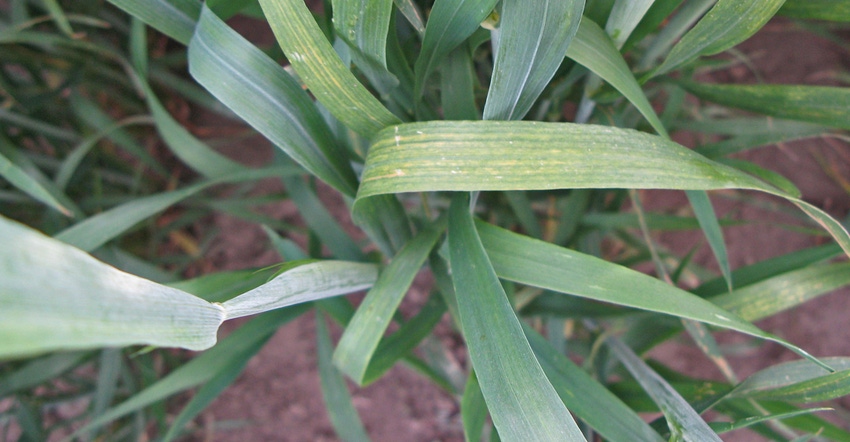September 6, 2018

The next planting season for the West is nearing, with the winter wheat crop about to go into the ground. Colorado State University recently published tips and insights to help growers make the most of this next busy season of the crop year.
One tip that goes to the top of the pile is control of wheat curl mites to help prevent wheat streak mosaic virus from infecting the new crop. The mite is a vector for the disease to infect wheat plants.
A key issue for the mites is its ability to oversummer in crop hosts including wheat fields, volunteer wheat, pasture wheat grasses and even cornfields. The No. 1 “green bridge” for these bugs is volunteer wheat. If left growing into late summer, the mites can jump from those plants to a newly emerged crop and infect the new plants.
Once wheat streak mosaic virus is in your crop, there’s little you can do, but controlling volunteer wheat is a key management strategy. The university notes that controlling volunteer wheat should be done with tillage or herbicides a minimum of 10 days prior to a newly emerged wheat crop.
That 10-day period can break the green bridge, as wheat curl mites can’t survive on dead wheat plants.
There are also wheat varieties that CSU notes tolerate wheat streak mosaic virus, including Avery, Byrd, SY Sunrise, LCS Mint, WB 4418 and Tam 112. A later planting date can also help, since mites become less active when weather cools.
More tips ahead of planting
Ahead of planting a new crop, the university advises farmers to look at last year’s crop. Checking your fields and attending field days can offer information on new varieties and give you an idea of what worked, and what didn’t, last season.
Planting date — which in Colorado is mid-September — can vary widely in the state and region. Winter wheat has a wide-ranging planting window. Early planting can provide good stand establishment, but also boost your potential for Hessian fly infestations, wheat streak mosaic and barley yellow dwarf. Later planting can help reduce those problems. Early-planted wheat can also have excessive fall growth that uses valuable soil moisture, which is an issue in water-limited areas.
However, planting too late subjects the crop to the risk of winterkill, poor fall growth and tillering, which can boost wind erosion. Delaying planting dates can also cut into yields. If you delay the planting date past optimum timing, consider boosting the seed rate to reduce tillering potential.
Seeding rates vary across the state. For Colorado dryland planting, 30 to 60 pounds per acre is common, with most using 45 to 60 pounds per acre (600,000 seeds per acre is optimum). Seeding rates in Colorado have been increasing in the past 10 years, which may be due to rising use of semidwarf varieties.
If you have large seed, which has been shown to increase grain yields in work done by Kansas State University, you can get more vigor and fall foliage production compared to small seed. But CSU cautions that grain yields can’t be guaranteed every year. One example is the Karl variety, which showed no difference in yield between light and heavy test weight; that seed offers excellent tillering capability and varieties that tiller can compensate for small seed size.
Source: Colorado State University
You May Also Like




